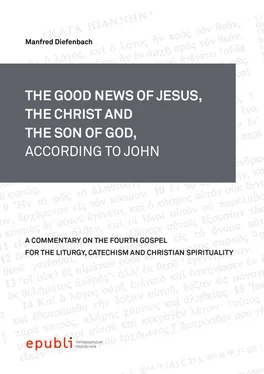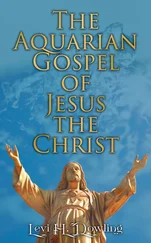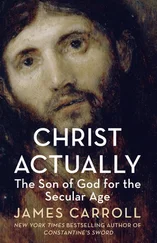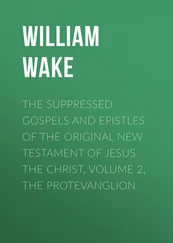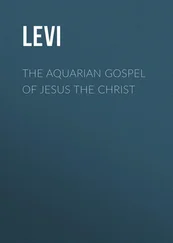+ The Consequences for the Believers and Non-Believers in the “Son of Man” (vv. 18–21 252 )
Jesus/the Fourth Evangelist differentiated the consequences for the believers (cf. vv. 16c, 18a) and “non-believers” (cf. v. 18b–c) because of their “ works / deeds ” 253(vv. 19d, 20c, 21b) with the help of a contrast:
v. 18:Jesus’ promise is that
everyone who “believes in Him ” “ is n o t condemned” – note the present tense in verse 18a. However, everyone who does “n o t believe / is / ( ) condemned ( already )” (cf. Mark 16:16) – verse 18b is in the centre of this verse –
“ because he has n o t believed in the name of the only Son of God” – note the positive version in verse 16.
To “ believe in ” (vv. 16c, 18a) Jesus means to put our trust and confidence in Him that He – our Redeemer and Saviour – alone can “ save ” (v. 17c) the mankind in “ the world ” – us. The Fourth Gospel proclaims at its beginning (cf. John 1:7) and end (20:30–31), that the things are written that all may “ believe ” and through “ believing ” “ have ( eternal ) life ( )” (vv. 15, 16d, 36a) “ in ” Jesus’ “ name ” (cf. 1:12; 2:23; 20:31). In view of the “believing in Jesus” the Fourth Gospel – so rich in characters – shows the range of possibilities through His disciples 254as a model on the one hand and “the Jews” 255as His opponents on the other hand. The point of view and purpose of the Fourth Gospel is the discernment: Either that one “ believes in ” Jesus or that one does “ not believe in ” Him. He is looking at the range of YES or NO to Jesus, here and now, and not later. So all believers in Him are going to be “ saved ” (cf. v. 17c) and “ have everlasting life ” (cf. vv. 15, 16d, 36a and 20:31): “ Whoever hears my word and believes Him who sent me has eternal life and will not be condemned; He has crossed over from death to life ” (5:24).
v. 19:The thought of “ judgement ” 256respectively “ condemnation ” 257(cf. vv. 17b, 18a, b) which is in the present tense appears in verses 19–21 again in combination with the symbol of “ light ” for “( eternal) life ( )” compared with “ darkness ” 258(v. 19c) as “ evil ” 259(v. 19d and Colossians 1:21). The believer in Jesus who is the “ light ” (cf. 1:9; 8:12b; 12:35–36, 46) loves “ the light” 260(vv. 19b, c, 20a, b, 21a and 8:12c, e) as His daughters and “ sons of light ” (12:36 – note also Ephesians 5:8: “ children of light ”): “ God is light; in Him there is no darkness at all ” (1 John 1:5). According to the Nicene Creed we Christians pray and believe: “God from God, light from light, true God from true God, begotten not made …”
So “ the light ” itself stands for all possible decisions in favour of belief in Jesus Christ.
v. 21:Therefore the “children of light” do the “ truth ” 261(cf. 1 John 1:6) and are in Jesus’ “ light ” as well as become the “ light ” on Jesus’ behalf on earth because of their “ works / deeds ” (cf. Matthew 25:34–40, 46b) in His Spirit.
v. 20:However, the “non-believer” who does “ wicked ” 262things – note the (not-) doing of the “bad men” in Matthew 25:41–46a –
“ loves the darkness ” (cf. John 1:5; 8:12d; 12:46) and
“ hates ” 263the “ light ” (v. 20a and Job 24:13–17) – note the contrast of “love – hate” and “darkness – light” as the contrast between the “ foolish ” and “ wise ” virgins in John 25:2 and the “ sheep ” on “ the right side ” (+) and “ goats ” on “ the left side ” (–) in Matthew 25:33. This one will “ not come into the light that (his ) works / deeds ( )” (vv. 19d, 20c, 21b) will “ not be exposed 264” (cf. Ephesians 5:13).
2.2.5 First Setting as a Journey Note (vv. 22–24)
Who:Jesus, His disciples (v. 22), John the Baptist (v. 23)
Where:Jesus and His disciples in the Judean region (v. 22a) – John the Baptist in (the Samarian) “ Aenon near Salim ” (v. 23a)
When:? – during the first year of Jesus’ public ministry
v. 22:After Nicodemus’ discussion with Jesus (cf. vv. 1–21), a typical Johannine phrase “ met à ta ũ ta ” (= “ thus/so ” – cf., for example, John 5:1, 14; 6:1; 7:1) in verse 22a introduces a general journey note – “Itinerar” 265(cf., for example, 4:3). The Fourth Evangelist relates that “ Jesus ” and “ His disciples ( )” went “ into the Judean land/countryside ” (cf. 4:3; 7:3; 11:7 – 2:13–3:21, 22–36; 5:1–47; 7:2–10:39; 11:1–46, 47–53, 54, 55–12:50; 13:1–20:29 266) where He spent some time “ with them and He was baptizing 267” (vv. 22c, 23d, 26f and 4:1–2) in Judea.
v. 23:He continues with the information about the place where “ John ” (in Greek “ Io á nnes ”) the Baptist (cf. vv. 23a, 24, 25, 26a, 27a and 1:6, 15, 19, 26, 28, 32, 35 , 40; 4:1; 5:33, 36; 10:40–41) “baptized” (cf. v. 22c) the people in Samaria: “ in Aenon 268 near Salim , because ( ) [ ] { there } [ was ] plenty of ( water ) { }”.
v. 24:The Fourth Evangelist comments that it was before the arrest of John the Baptist “ in … prison 269” (cf. Mark 1:14; 6:17; Matthew 4:12; 14:3; Luke 3:20).
2.2.6 John the Baptist and the Messiah (vv. 25–36)
- Second Setting (vv. 25–26a)
Who:John the Baptist (v. 26), his disciples (v. 25a), a Jew/some Jews
Where:“ Aenon near Salim ” (v. 23a)
When:before John the Baptist’s arrest (v. 24)
v. 25:The “ disciples of John ” the Baptist had an “ issue, a discussion , debate ” about the “ purification ” 270(cf. John 2:6) with “ a Jew ” respectively with some “ Jews ” 271.
- The Testimony of John the Baptist about himself and Jesus (vv. 26b–36)
+ The Question of John the Baptist’s Disciples (vv. 26)
In this context the “ disciples of John ” (v. 25) the Baptist asked their master:
“ Rabbi ” (cf. v. 2c), “ He who was with you across the Jordan” (cf. 1:26–34),
“ to whom you gave witness ” – note the keyword “ marturéo ” in verses 11e, 26d, 28a, 32b –,
behold ” (cf., for example, this imperative in 1:29, 36, 47) , this one is baptizing” (cf. vv. 22c, 23d) – note the remark by the Fourth Evangelist in 4:2: “ His disciples ” – “ and all are going to Him ”. “The rivalry between” the disciples of John the Baptist and Jesus “may reflect the situation when the Gospel was written” 272(cf. Acts 18:24–19:7)
+ John the Baptist’s Reflection on himself (vv. 27–30)
v. 27:John the Baptist introduces his answer like a thesis – note verse 30a–b as climax respectively synthesis – as follows: A “( man ) cannot ( ) receive only what it is given him from Heaven ” (cf. John 19:11 and Matthew 28:18).
Читать дальше
